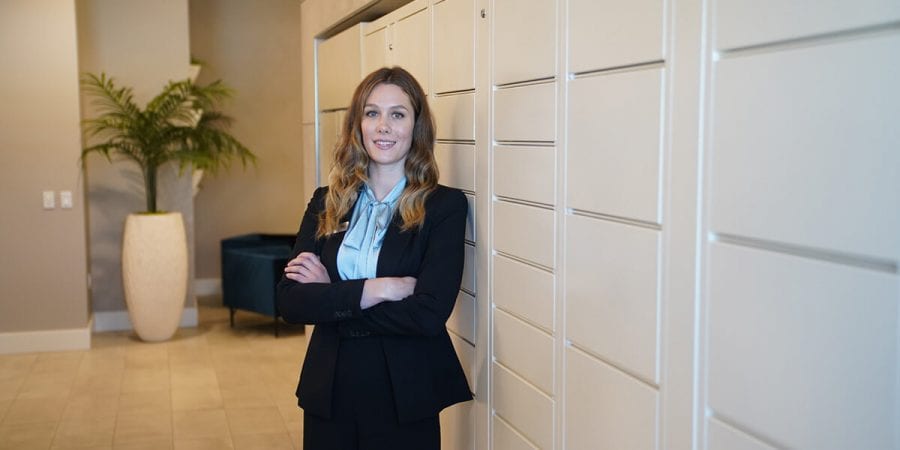
Multifamily
The Future of Property Management For Multifamily Apartments
Written by: Parcel Pending
7 Min Read
Published: October 3, 2019
Updated: March 29, 2023
As the world continues to undergo rapid metamorphoses, thanks much in part to the Information Age, the transformation of society into a digital world has impacted almost every aspect of our lives. From how we shop to where we live, there has been a fundamental shift in consumer behavior and expectations. Naturally, this has had significant impacts in the multifamily housing world—for both good and bad. As a result, property managers must adapt to the times or else go the way of the dinosaurs.
Now, all of this change may seem overwhelming. Fortunately, though, there are simple things you can do, add, or change in order to optimize your rental property going forward. Below, we’ll discuss apartment trends and highlight what the future of property management looks like.
The Future of Property Management For Multifamily Apartments
In the quicksilver world of multifamily housing, there are some key trends that have been consistently appearing year to year. Being aware of such things will help you enter the future prepared to face what’s to come. From residential lockers to smart home technology, we’ll help you review and prepare for some of the changes that are shifting the market.
Shifting Renter Demographics
Before we dive into trends, it’s essential to understand your renter demographics. Unsurprisingly, the wants and needs of a younger generation will differ greatly from those of an older one. This is of particular importance since millennials will soon pass up Baby Boomers as the largest adult living population. In addition, this new generation is far more likely to rent and to rent longer than their older counterparts. According to Rentcafe:
Millennials pay a whopping $92,600 in total rent by the time they turn 30, more than what their Baby Boomer parents paid by the time they hit the same age. It seems that millennials do put a massive amount of money into renting, but the numbers also show that their total median income is the highest among generations, earning about $206,600 in 8 years. However, they spend 45% of this income on rent between the ages of 22 and 30, which is more than the recommended 30%. In fact, none of the two previous generations managed to keep the rent burden under 30% with Gen Xers witnessing a rent burden of 41% and Baby Boomers of 36%.
In short, a significant plurality of young people has given up on the idea that you should buy a home and start creating equity as soon as you have the money to do so. Instead, they’re waiting longer and longer to do so. Reasons for this include:
- Desire for flexibility and mobility – Most millennials will have multiple jobs by the time they hit 30. They do not want to be tied down to a specific place or location.
- Doubt in the housing market – A large percentage of this demographic witnessed their parents take massive hits during the 2008 housing crisis and question whether or not it actually is a solid investment.
- Rising costs – Especially in cities, where large percentages of young people tend to flock to, the costs of owning a home are exorbitantly expensive in many of their views.
Millennials plan on renting longer than ever. And soon, they will become your most common rental profile, if they haven’t already. With this in mind, it’s important that you tailor your rental properties to their wants and needs in order to entice them into renting one of your units.
Oversupply is Much Ado About Nothing
Over the past decade, there have been fears of oversaturation in the marketplace arising from an increasing number of developers entering the multifamily housing market. While there are places of moderate oversupply, experts believe that worries have been overblown. In fact, according to Yardi Matrix’s Q4 study, they found the following:
- With significant supply expected to be delivered over the next two years, multifamily deliveries may outpace demand in some of the top 30 metros in the U.S. Expect volatility, as some markets and submarkets with outsize development activity experience rising vacancy rates and stagnating rent growth.
- Over the longer term, the supply picture is more balanced. We expect construction will moderate after the more than 600,000 units currently under construction are completed.
- Most of the metros that are at short-term risk of oversupply have strong economies and healthy multifamily demand, so units coming online should be absorbed by growing populations. Plus, developers will pull back the throttle if occupancy rates wane much.”
Don’t worry about a lack of demand in the future. Those fears have been overstated. The only thing you can do is focus on providing the best living space possible.
Package Influx is a Mounting Problem
One of the largest pressure points for any multifamily housing unit is a tsunami of packages being delivered daily. Even large apartment units tend to be woefully unprepared for this shift in how people are now shopping.
This can result in a cramped, disorganized mailroom and far too much of your time being spent on receiving, sorting, and delivering packages to apartment residents. Even if you’re only spending five minutes on each package in a unit that receives 25 packages a day, that ends up accounting for roughly two hours of your eight-hour workday. Not to mention all the time spent on looking for lost, misplaced, or stolen packages. Property owners are left stuck looking for any tips and tricks that can help with this growing problem.
According to Bisnow, many apartment owners have grown the size of their storage rooms to try to keep up with the rapidly increasing volume of packages delivered to their buildings, but some see that as an unsustainable approach and are beginning to turn to new solutions. “The real estate industry as a whole is struggling with how to deal with this issue, and we need to look at how to redefine how to deal with packages going forward,” Bozzuto Vice President Stephanie Rath said. “We can’t continue to grow storage spaces.”
In order to address this package crunch and manage all the deliveries, more and more property managers have been turning to alternative solutions like installing smart lockers from Parcel Pending. These electronic residential lockers make package delivery, acceptance, and retrieval fast and convenient while also serving as a package theft deterrent. Benefits include:
- Smart – Infrared scanner to detect and sort packages.
- Secure – 24/7 cloud-based video surveillance.
- Courier Agnostic – Accepts deliveries from any and all couriers.
- Convenient – Multi-sized lockers can handle almost any sized package.
- Cool – Lockers are refrigerated, which allows groceries, drinks, and medicines to stay cool at the proper temp.
- Mobile App – The mobile app allows tenants to manage deliveries and be notified when items arrive.
By adding simple amenities, you reduce your operational costs and increase your residents’ satisfaction and in turn, resident retention.
Tenants Want Modern Amenities
On a similar note, thanks to services such as Zillow and Apartment Finder, it’s easier than ever for prospective renters to find the right apartment for them. Often, the deciding factor in selecting one apartment unit over another comes down to the offered amenities. Millennials, in particular, want to live in a place that isn’t just a roof over their heads; instead, they want convenience, community, and security all wrapped into one nice package.
Amenities that you may want to consider installing or adding in a remodel include:
- Smart home gadgets – Items such as these not only add convenience to a tenant’s life, they also have the dual benefit of reducing operating costs, particularly those related to electricity and water. Navigant Research’s Paige Leuschner writes: “The multifamily vertical is emerging as an attractive market for smart home technology. Building owners and managers are looking for cost-effective ways to differentiate their buildings, generate additional revenue from higher unit prices, and save on operational costs by equipping their buildings with smart home technologies.”
Additions worth considering include:
- Amazon Alexa
- Google Home
- Nest Thermostat
- Ring Doorbells
- Phillips Hue Lighting
- Energy Star appliances
- Green living – Millennials especially care about their ecological footprint. Studies have shown that they’re willing to pay an extra $100 in rent if it means that they’re living in a place that is eco-friendly. Going green will:
- Entice prospective tenants
- Demonstrate your company’s values
- Reduce operational costs
- Communal spaces – As mentioned, since they’re living in apartment complexes for longer, younger renters want the place they live to be multipurpose. Ideally, residents would love to work, hangout, and workout without ever having to leave the grounds. While these features may be harder to add ex post facto, they are worth considering if you’re planning to build a space or going through a remodel. Communal spaces might include any of the following:
- Gyms
- Cafés
- Workrooms
- Conference rooms
- Pools
- Spas
- Parks
Stepping Into The Future
The future of property management for multifamily housing is a bright one. So, although customers may have rising demands and expectations, the good news is that there are simple actions you can take to make your rental property more inviting and make managing it easier. Whether that be adding smart lockers or going green, by understanding your renter demographics, wants, and needs, property owners like yourself, will be able to respond to market shifts with alacrity. By arming yourself with this knowledge of apartment trends, you will be able to equip yourself with property management tools that will help you succeed.
Sources:
- Sarac, F. RentCafe. Millennials Spend about $93,000 on rent by the time they hit 30. https://www.rentcafe.com/blog/apartment-search-2/money/millennials-spend-93000-on-rent-by-the-time-they-hit-30/
- Yardi Matrix. U.S. Multifamily Supply and Demand Forecasts. (2019). https://www.yardimatrix.com/Media/Downloads/File/453-Matrix-Multifamily-Demand-Jun-2018?signup=false
- Banister, J. Bisnow. Apartment Managers Experimenting with New Solutions to Growing Package Problems. (2018). https://www.bisnow.com/national/news/multifamily/apartment-managers-experimenting-with-new-solutions-to-growing-package-problem-85346
- Leuschner, P. Navigant Research. Smart Home Solutions Expand into Multifamily. (2018). https://www.navigantresearch.com/news-and-views/smart-home-solutions-expand-into-multifamily
- Curtin, M. Inc. 73% of millennials are willing to spend more money on this 1 type of product. https://www.inc.com/melanie-curtin/73-percent-of-millennials-are-willing-to-spend-more-money-on-this-1-type-of-product.html



